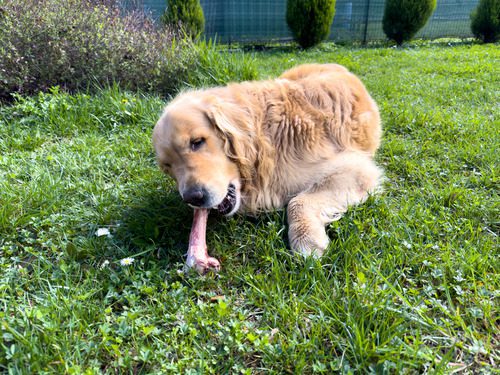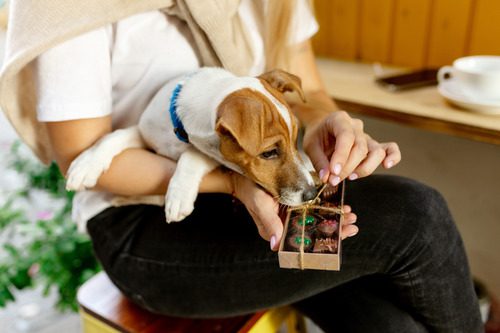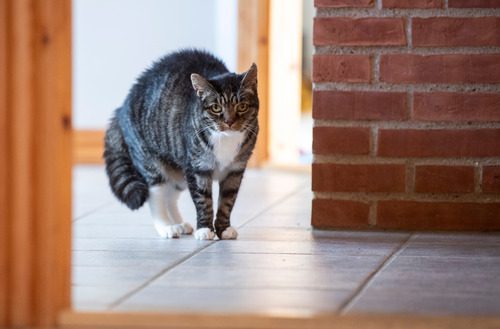There’s a Lump on My Dog’s Leg, What Does it Mean?
Pets are beloved members of our family and though they rarely complain about anything, we often discover that lump or bump that we never noticed before and tend to have a sense of dread. It’s every dog owner’s nightmare: finding a lump on their beloved pet.
But just because there are lumps on your dog’s legs, that doesn’t necessarily mean your dog has cancer. In fact, there are several other potential underlying causes that could contribute to lumps on a dog’s leg, and they are usually more common than cancer, too.

Common Causes of Lumps on Dog Legs
Read through the list below to find out more about what your dog’s leg lump could mean. And remember, as with any question about your pet’s health and wellness, be sure to talk to your veterinarian for more information and an accurate diagnosis.
Some common causes of lumps on dog legs include, but aren’t limited to:
Lipoma
Lipomas are the most common cause of lumps and bumps on a dog’s skin. This problem is sometimes also called a “fatty tumor,” and it is benign, meaning that it is not cancerous. It occurs in adult and senior dogs, but it becomes more common as dogs get older. It can also happen more often in larger breeds and dogs who are very overweight.
Lipomas are not painful and grow very slowly. If a lipoma grows in an area that impacts a dog’s mobility, it may need to be removed; otherwise, however, it can be left alone and monitored in many instances. Some pet owners have these tumors removed for aesthetic reasons, and your vet can give you more information about your options if you choose to do this.
Sebaceous Cyst
Sebaceous cysts in dogs are the same as they are in humans. They are simply blocked glands in the skin that become swollen and can turn firm to the touch—more or less like a pimple that stays under the surface level of skin. This problem can often clear up on its own, but may need antibiotics in some instances.
If your dog has a sebaceous cyst, it is harmless, but it can be painful to the touch. If it pops, your dog may be in pain for a short while as it drains, and there will be an increased risk of infection from it as well. For this reason, a vet visit is recommended for this problem. Your dog may need to be given topical antibiotics and may need to have the cyst bandaged for a few days, depending on how deep it goes. In some cases, the veterinarian may recommend removal.
Lick Granuloma
Another common cause of lumps on dog legs is lick granuloma. A lick granuloma usually presents as an open wound, but it can sometimes scab over and become a lump or large bump on a dog’s leg instead. This problem is common in dogs who lick their legs out of nerves or anxiety, and it is caused by the obsessive habit of licking the same spot over and over again.
Lick granulomas can go away with the help of topical steroids as long as your dog is not allowed to continue chewing or biting the affected area. In some cases, more aggressive treatments may be needed. The dog will likely need to wear a cone collar until the problem clears up, and may need anti-anxiety medication to help resolve the underlying problem.
Abscess
An abscess is a swollen pocket of skin that is usually filled with fluid or pus. It is usually a sign of an infection on the surface of the skin and often goes along with skin injuries, like cuts or bite wounds. Abscesses may be firm or movable, and they usually cause a lot of pain.
An abscess is an acute problem, which means it happens fairly suddenly instead of growing over time. If your dog has an abscess, you will need to bring to your veterinarian to drain the pus and may need to take antibiotics afterward. Fortunately, your dog should recover fully with no trouble.
Skin Tag
Some dogs may be much more prone to developing skin tags than others, and like humans, they are more likely to have this problem as they get older. Larger breed dogs and dogs who are overweight may also be at a slightly increased risk of developing this problem, too. Skin tags are simply growths of excess skin that looks like a small mole or wart but is not discolored.
If your dog has skin tags, there is nothing to worry about. However, they can look unsightly, and some dog owners opt to have them surgically removed even though they are harmless.
Go to a Veterinarian for Lumps on Your Dog’s Leg
A lump or bump on your dog’s leg doesn’t have to be a crisis. Although it is entirely possible your pet could have cancer, it is also just as possible—or even more so—that your pet could be dealing with one of the other problems on this list.
Only your vet can tell you for sure what’s going on with your pet. Your vet can also help you figure out the right treatment or management solution for your dog’s needs based on his individual health, specific needs, and more.
If you notice lumps on your dog’s legs, contact our team at Heart + Paw as soon as possible. All of our locations are staffed with veterinarians who care about your pet’s wellbeing as much as you do. We’ll help find the underlying cause of this condition and will develop the best possible treatment plan for them. When it comes to lumps on dog legs, don’t wait, book an appointment with us today.
Recent Posts
Can Dogs Eat Ham?
Ham is a popular meat found on many dinner tables, especially during the holidays. As a dog…
8 Signs and Symptoms of Diabetes in Dogs
Caring for a dog means being tuned in to the subtle changes that can reveal their overall…
Why Dogs Can’t Eat Chocolate and Tips for Keeping This Sweet Treat Out of Their Reach
Chocolate is a beloved indulgence for us, but for our dogs, it’s a hidden danger that can…
Why Cat Teeth Cleaning is Important For Your Pet’s Health
As a cat owner, you know how important it is to care for your feline friend’s overall…
Cat Body Language: A Guide To Understand What Your Cat is Telling You
Imagine trying to communicate without words, relying solely on subtle gestures, glances, and movements. This is how…
About Us
Heart + Paw was founded in 2018 by Chief Veterinary Officer Dr. George Melillo, who currently serves the Mid-Atlantic area. Heart + Paw offers a combination of veterinary care, pet grooming, and dog daycare to help be a resource in your pet parenthood journey.
We'd Love to Meet Your Four-Legged Friends
Find out how the friendly veterinary team at your local Heart + Paw can help your pets live longer, healthier lives by searching for a location near you.





